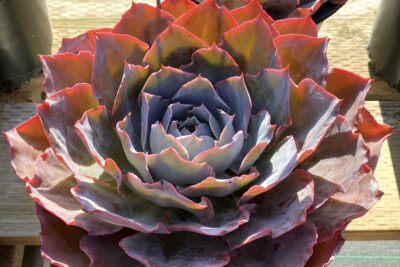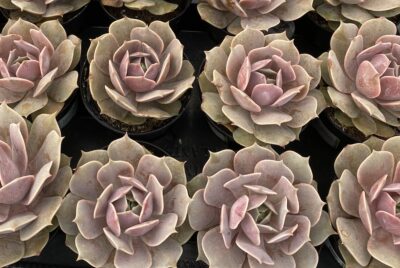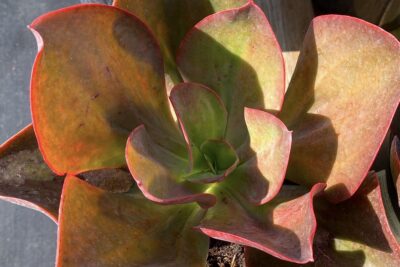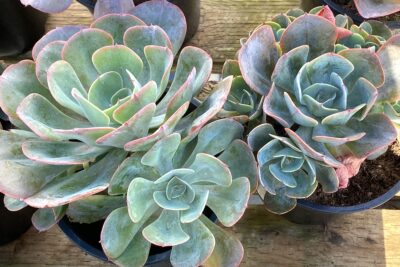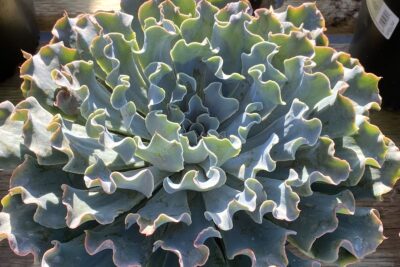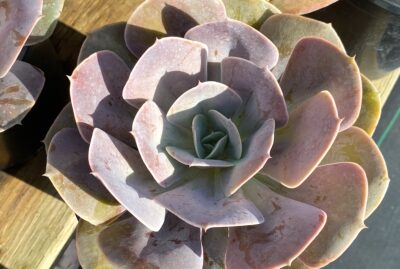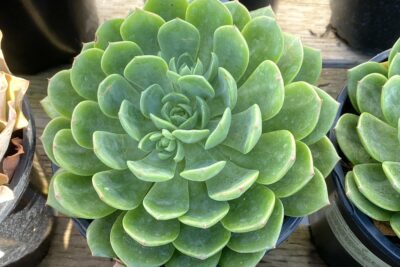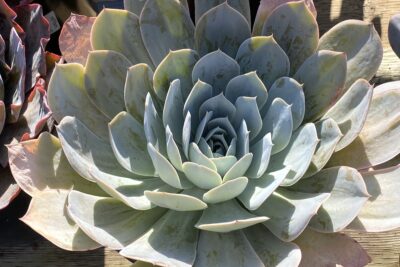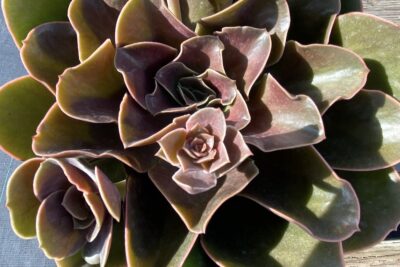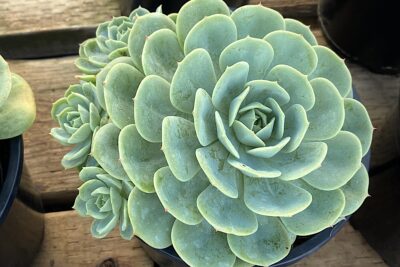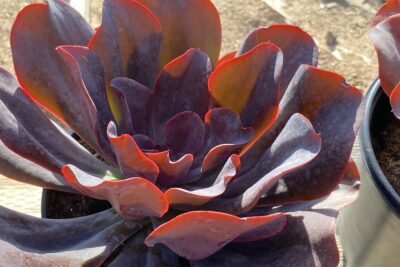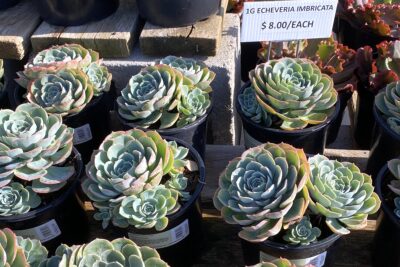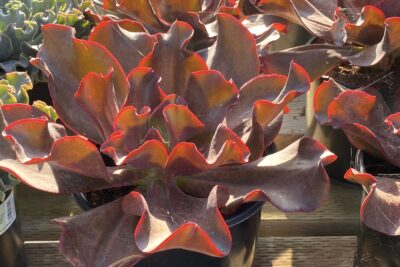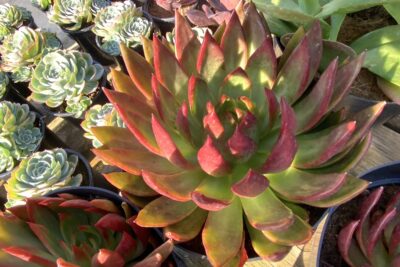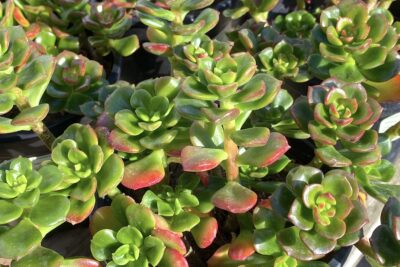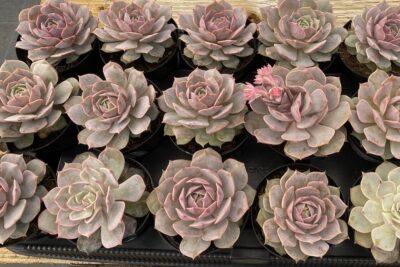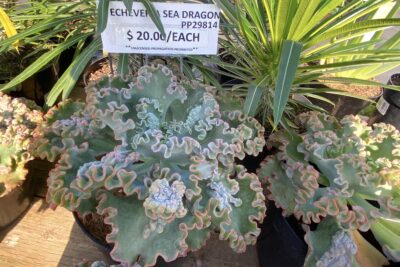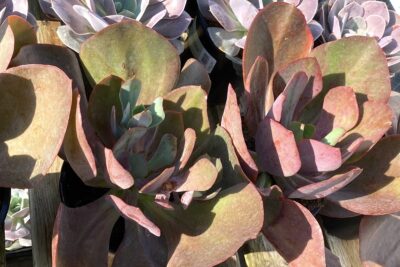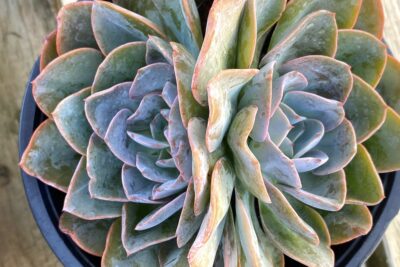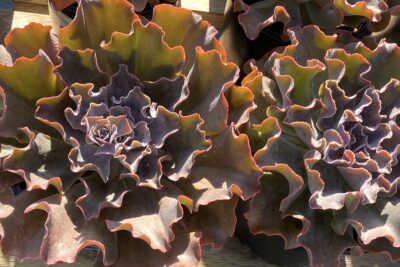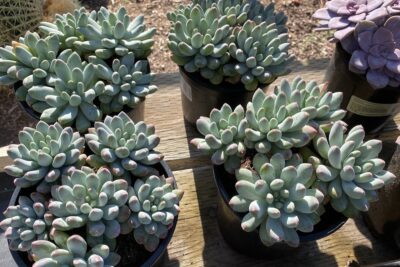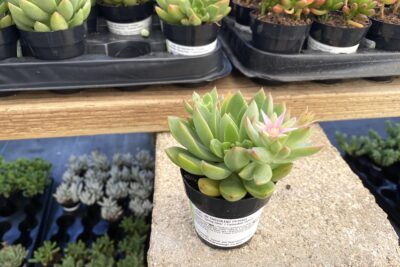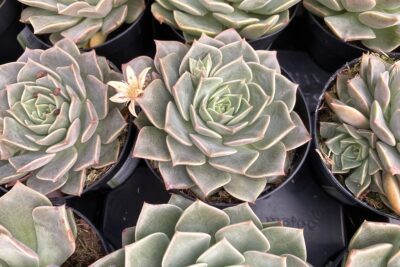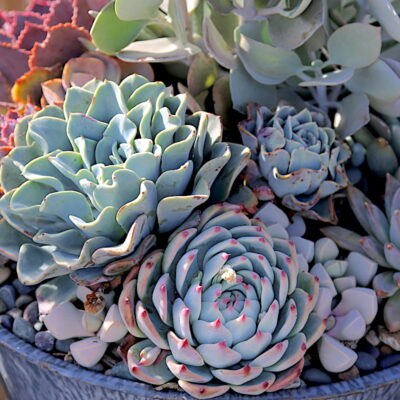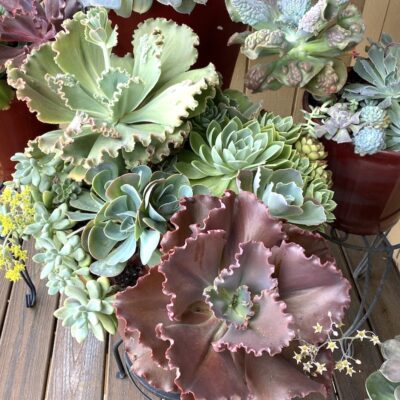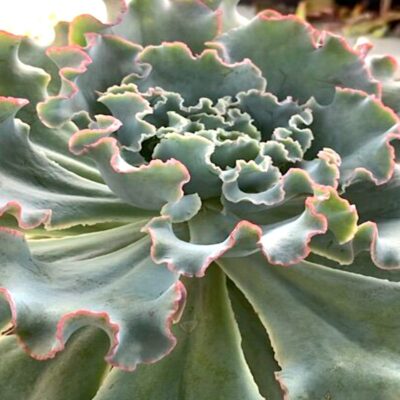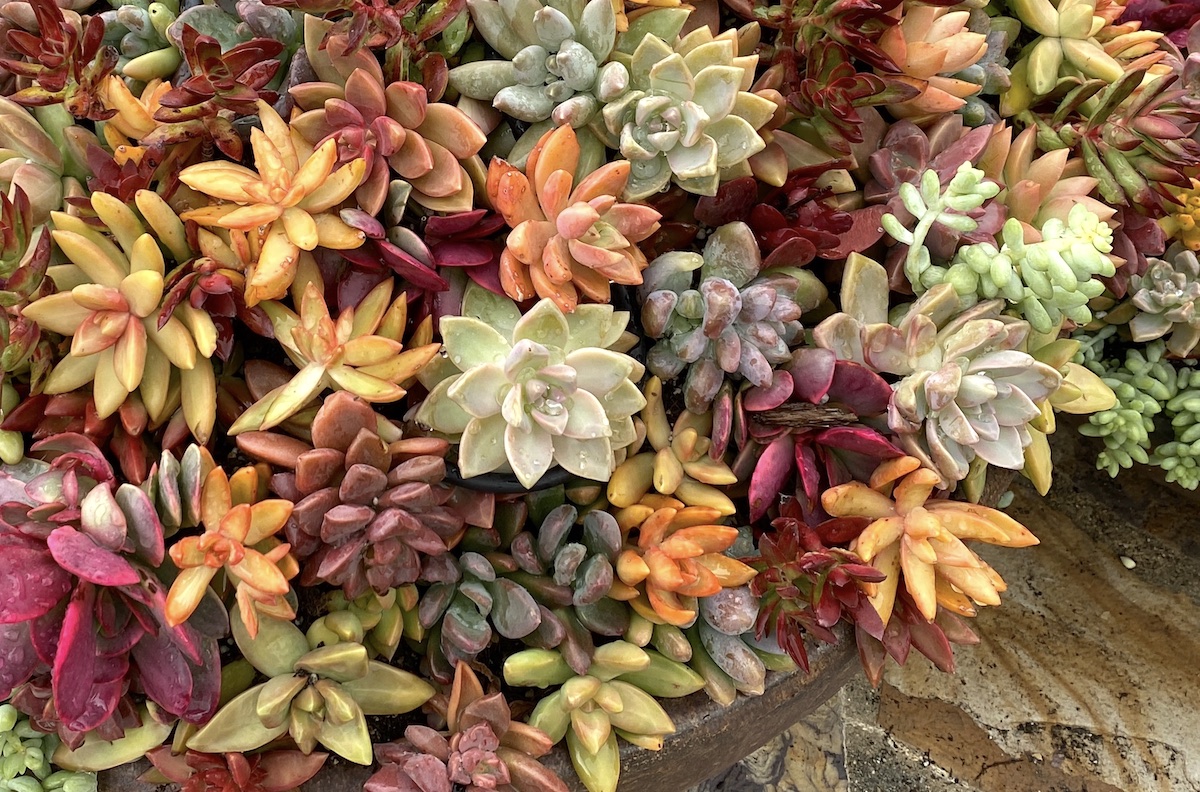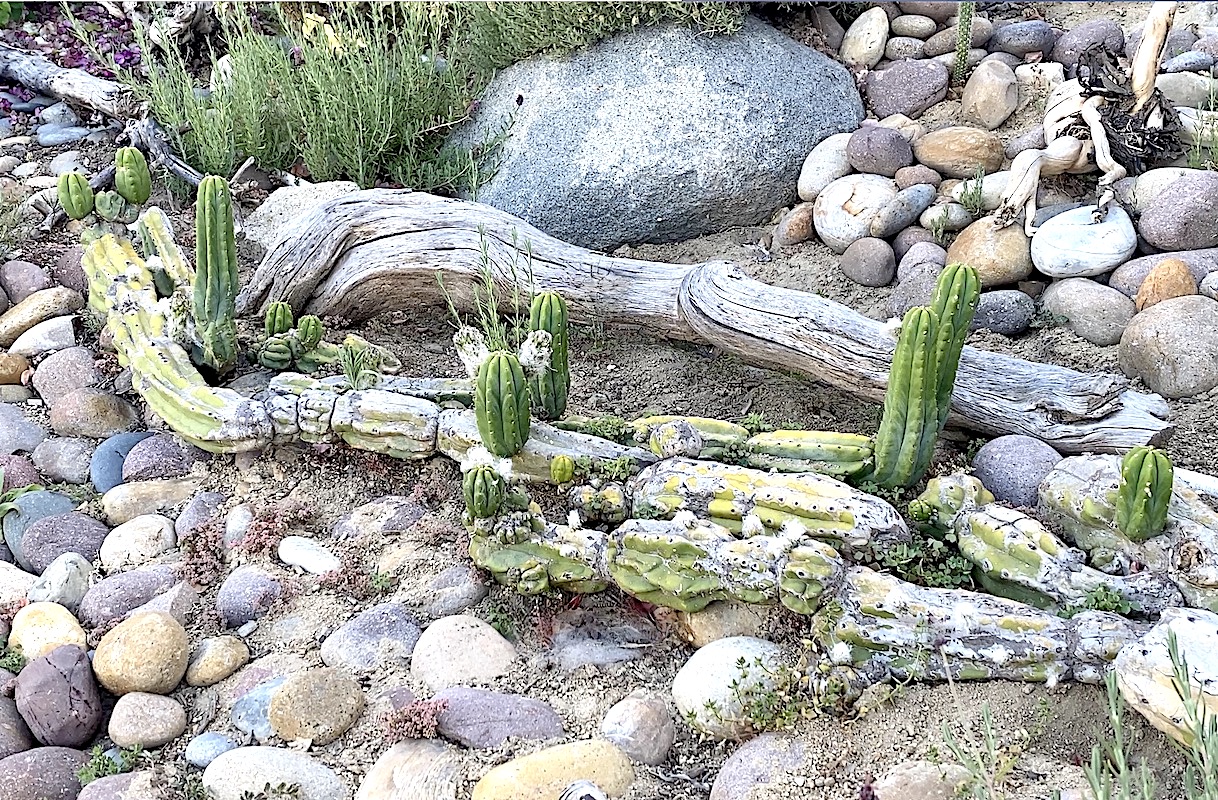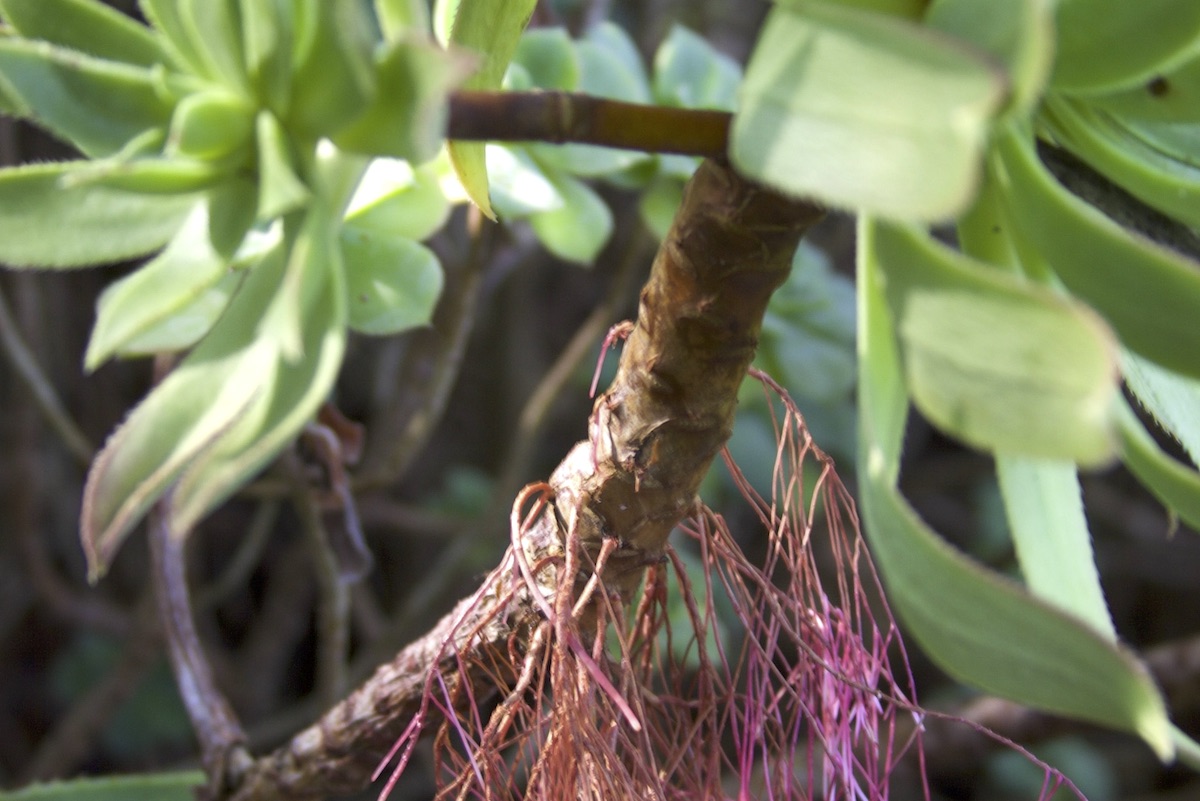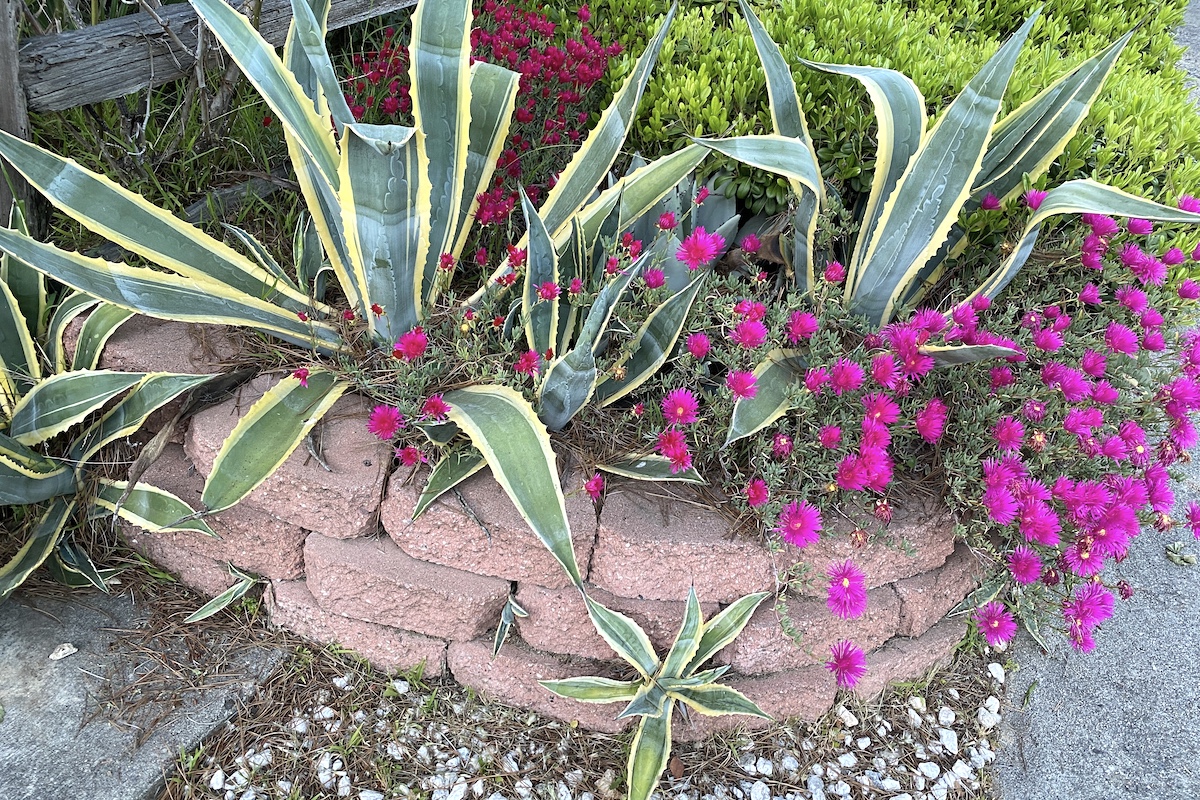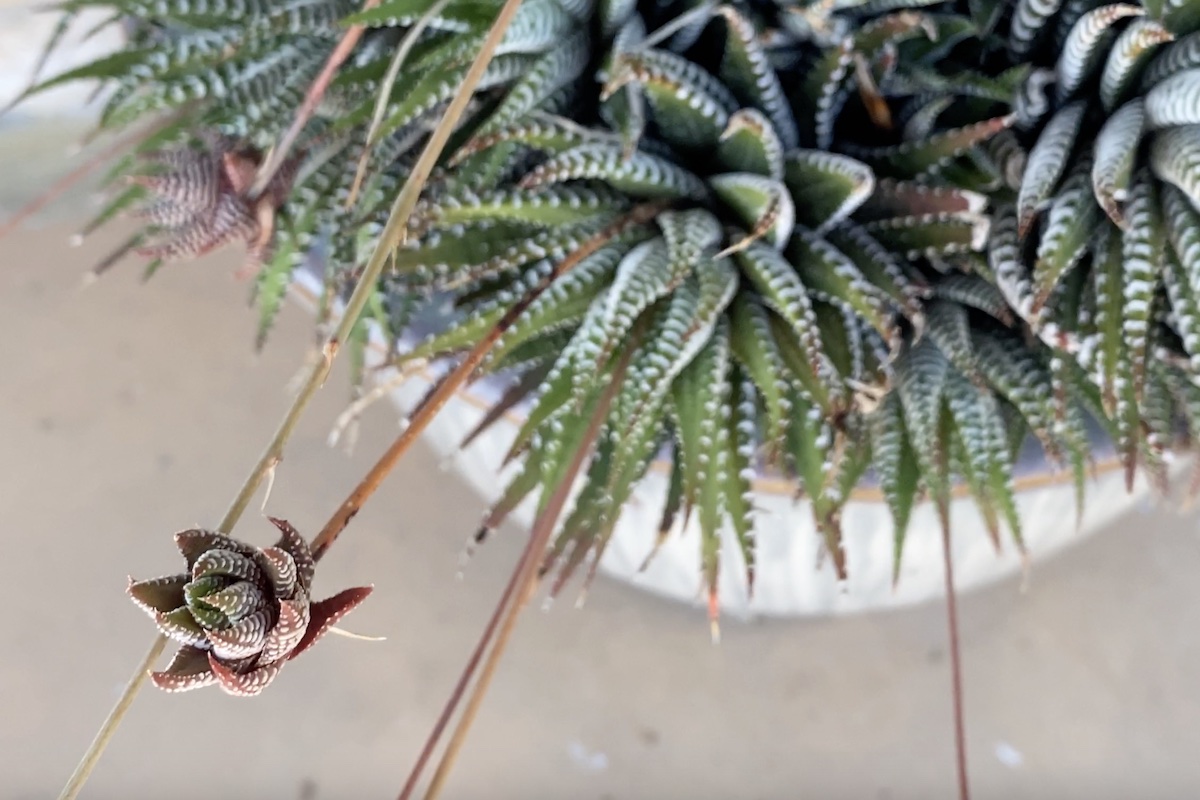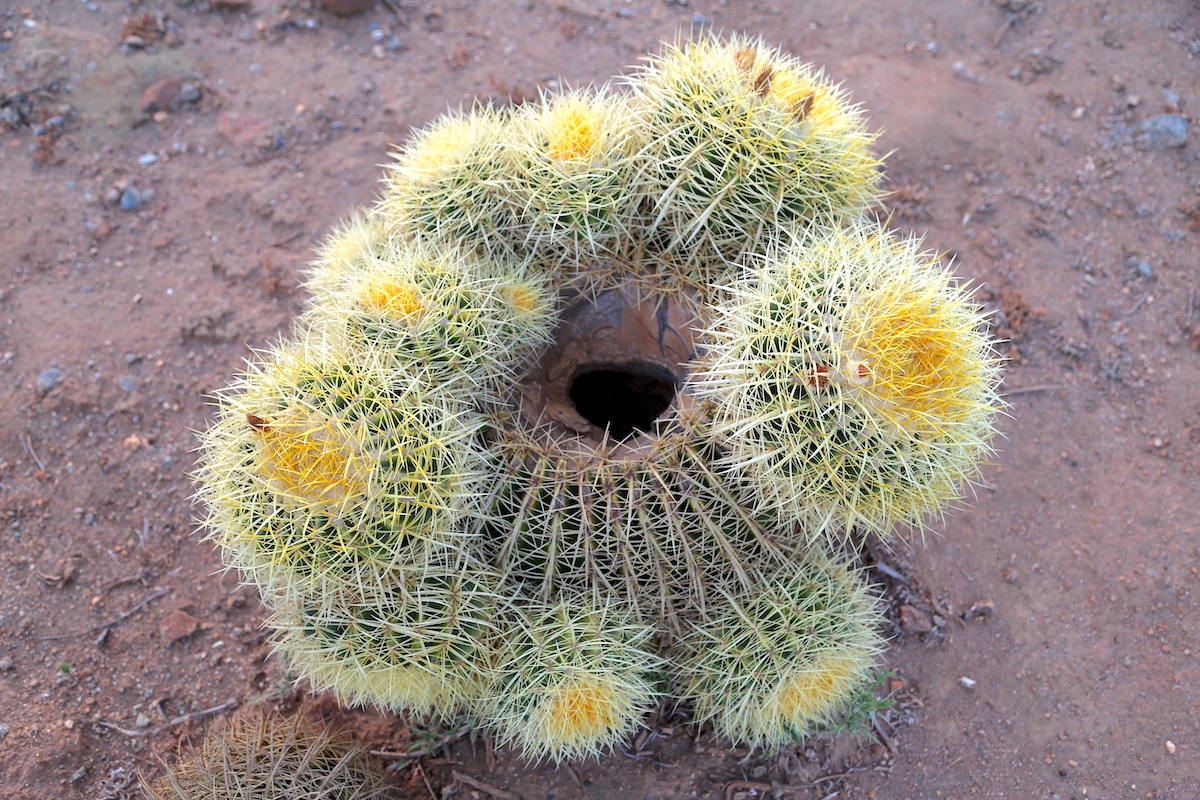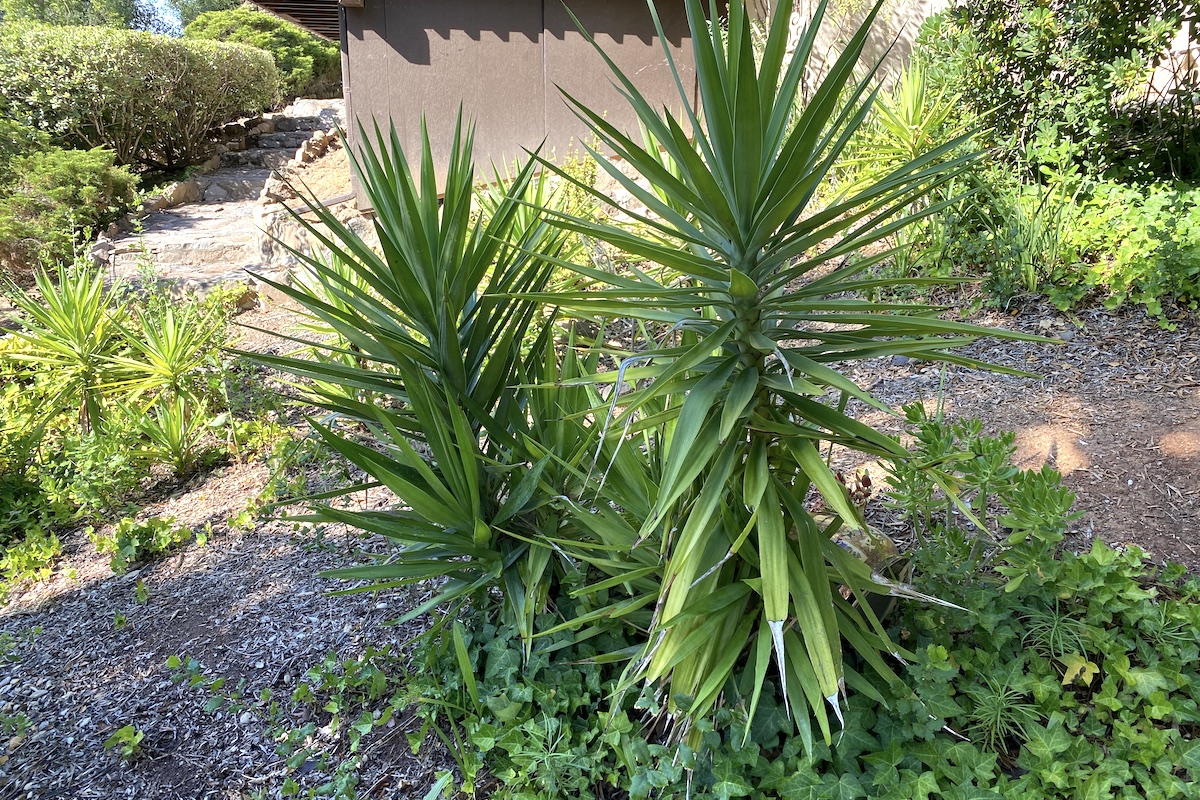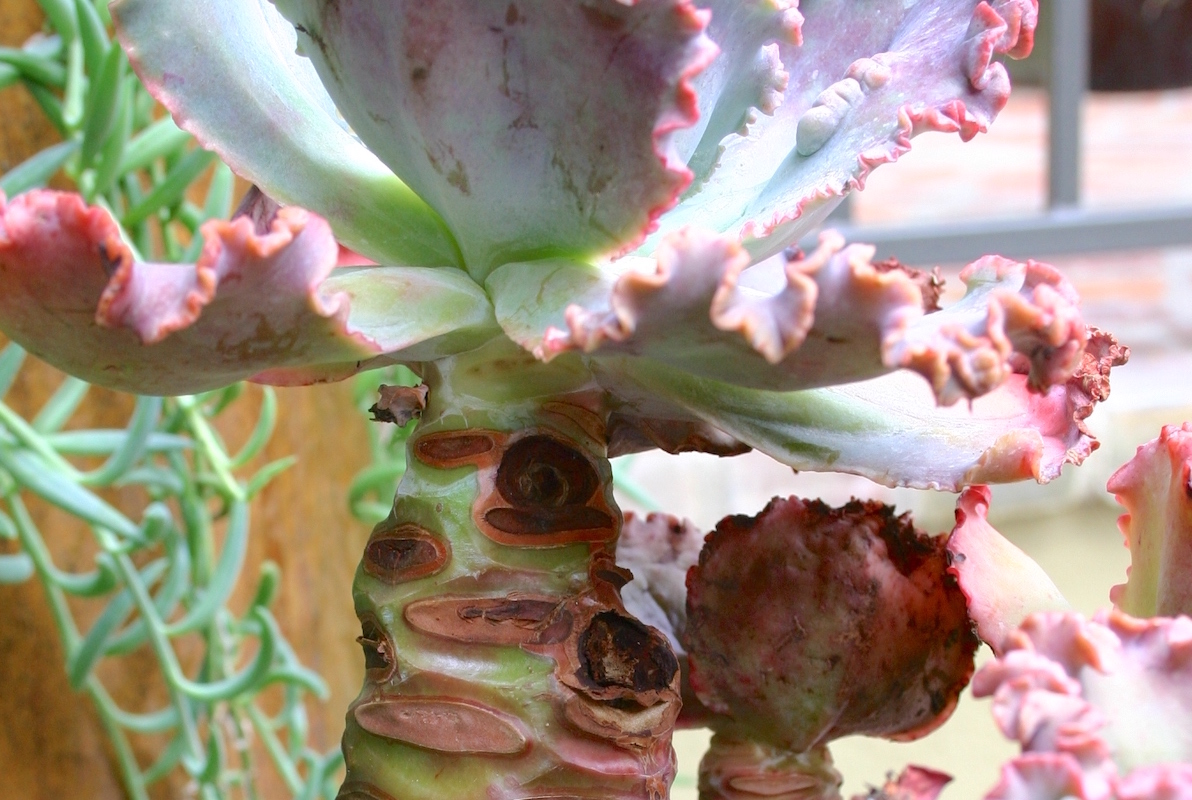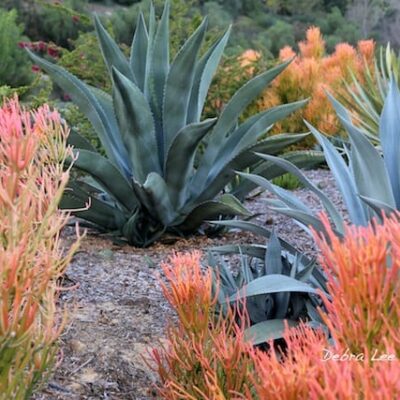The selection of large (dinner-plate-sized) echeverias at Oasis Water Efficient Gardens right now is astonishing. Great timing, too. Autumn is nearly upon us, and an important end-summer task is refreshing our echeveria gardens. My own occupies several large pots. Annually in late August, I pull off dry lower leaves, deadhead, and enhance the assortment---hence my trip to Oasis.
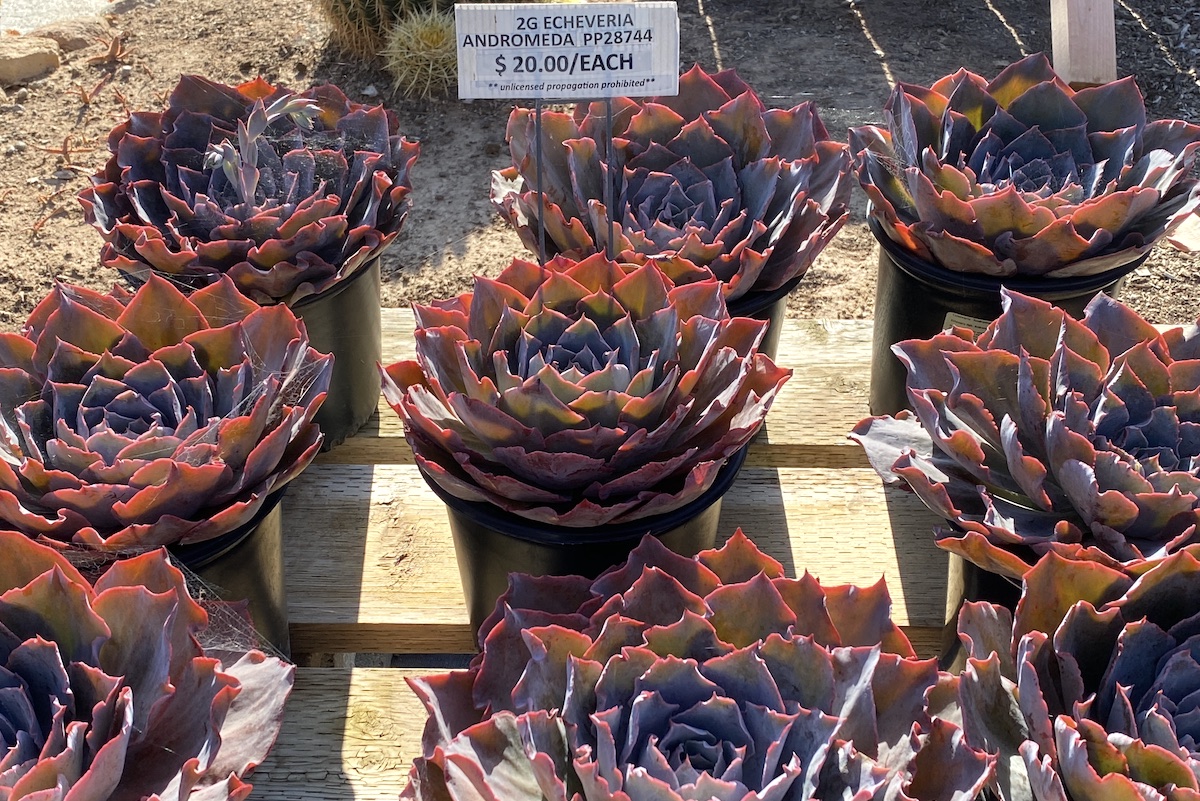
As you'll see in the Gallery below, echeverias at this north San Diego nursery are beyond beautiful.
Oasis is owned by Altman Plants, the largest wholesale grower of succulents. Oasis' selection typically includes patented Altman cultivars (indicated by PP numbers on their tags). Among them: rosy-red Echeveria 'Love's Fire' above, ripple-edged 'Crimson Tide', maroon-pink 'Fireglow', pastel pink 'Angel Kissed', and glossy 'Pink Diamond'.
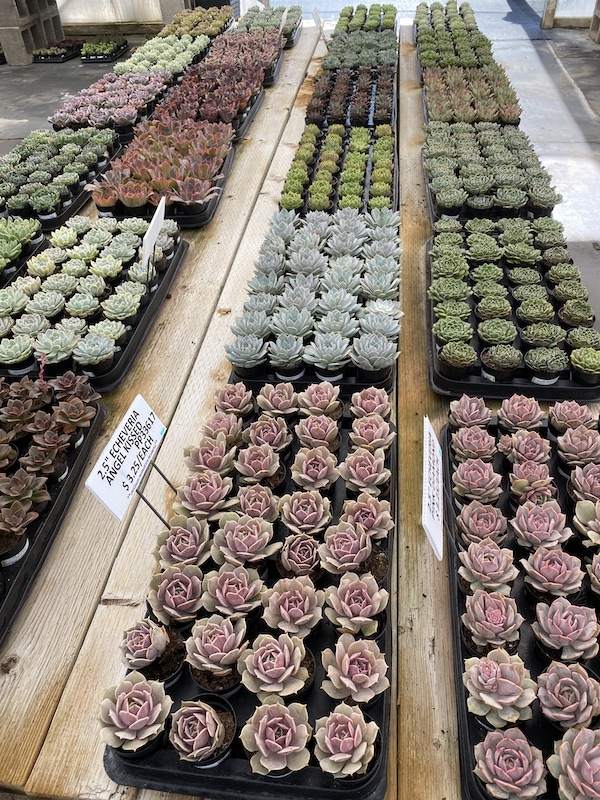
Above are echeverias in smaller pots (3-1/2" and 2-1/2"). Both of the pink varieties in the foreground are patented by grower/hybridizer Altman Plants.
There were cultivars I'd yet to see---and that's saying a lot---like pastel lavender 'Cream Puff', wavy blue 'Hawaii' and an intergeneric patented hybrid, Tacisedum 'Spring Glow' (x Graptopetalum and Sedum).
I also was delighted to find an old favorite: Echeveria imbricata. This symmetrical, offsetting "blue rose" from Mexico once was easy to find, but after succulents took off, it became so popular it nearly disappeared. Not surprisingly, the price soared.
Speaking of prices! I mean, c'mon: $20 for 2-gallon plants, $8 for one-gallon and 8-inch, $6 for 9cm (3-1/2 inches) and $3.25 for 2.5 inch!
Can't Get There? Tari's On It
But what if you live too far away to pounce? No problem.
I called succulent personal shopper Tari Colbry and asked if she could help...and she's happy to. In fact, Tari promised to do one of her "live sales" from Oasis. These are streamed via Instagram and are a lot of fun. Tari shows a plant, talks a bit about it, and tells viewers what she'll sell it for (plus shipping).
Tari's proud to offer a wide variety of superb plants priced competitively. She visits nurseries and growers, cherry-picks best specimens (mostly succulents, but she's branching out), then sells them during her scheduled sales. Her turnover is fast, so she doesn't post photos of what she has to offer on her website.
Follow Tari on IG so you'll know when this and future live-streaming sales will be. She's off to Ecuador, so it'll be when she gets back in a couple of weeks. Why she's there is a circuitous story that involves cool plants. I'll leave it to her to tell you about it. Just know Tari is one energetic gal who enjoys getting gorgeous plants to people who can't obtain them otherwise. She ships anywhere in the US. See her in action in my video.
Also when she gets back, Tari is moving her inventory from her home to a greenhouse in Vista, CA. It's over 2,000 square feet---more than double what she has now---with lots more space for packing and shipping.
As for Oasis' echeverias...
Below are those I saw mid-August. Do keep in mind availability and quantities change daily. Disclaimer: I am not affiliated with Oasis, and for all I know, they may be dismayed if this results in a stampede. Please don't pester them with phone calls. Contact Tari instead---she's up for it.
Do you see a succulent you simply have to have? Every echeveria I've brought home from Oasis has thrived, and some are huge Check out my own collection. As always, your comments are most welcome!
Gallery
Related Info on This Site
Echeveria Info, Photos & Varieties
Echeveria Info, Photos & Varieties How to grow echeverias perfectly, plus an extensive gallery, all ID’d See All Succulent Types Aeonium Agaves Aloes Cactus Crassula Echeveria Euphorbias Ice Plants Kalanchoe Portulacaria Senecio About Echeverias Here you’ll find expert advice to help you grow echeverias perfectly, with a gallery of 150+ beautiful, notable species and cultivars.…
Plant an Echeveria Garden in Pots
Echeverias do great in containers, so why not plant an echeveria garden all in pots? Because echeverias have great color, symmetry and resemble fleshy flowers, my own potted collection suggests an exotic flower garden.
How to Behead and Replant Echeverias
Fancy ruffled echeverias—those large, flowerlike succulents—eventually need to be beheaded and the rosettes replanted. This is a bother, but it comes with a benefit: New clones will form on old, headless stalks. But not always. Here’s how to ensure success.
The post Echeveria Bonanza at Oasis appeared first on Debra Lee Baldwin. Copyright © Debra Lee Baldwin.
from Debra Lee Baldwin https://ift.tt/pSXNH5B
via IFTTT


